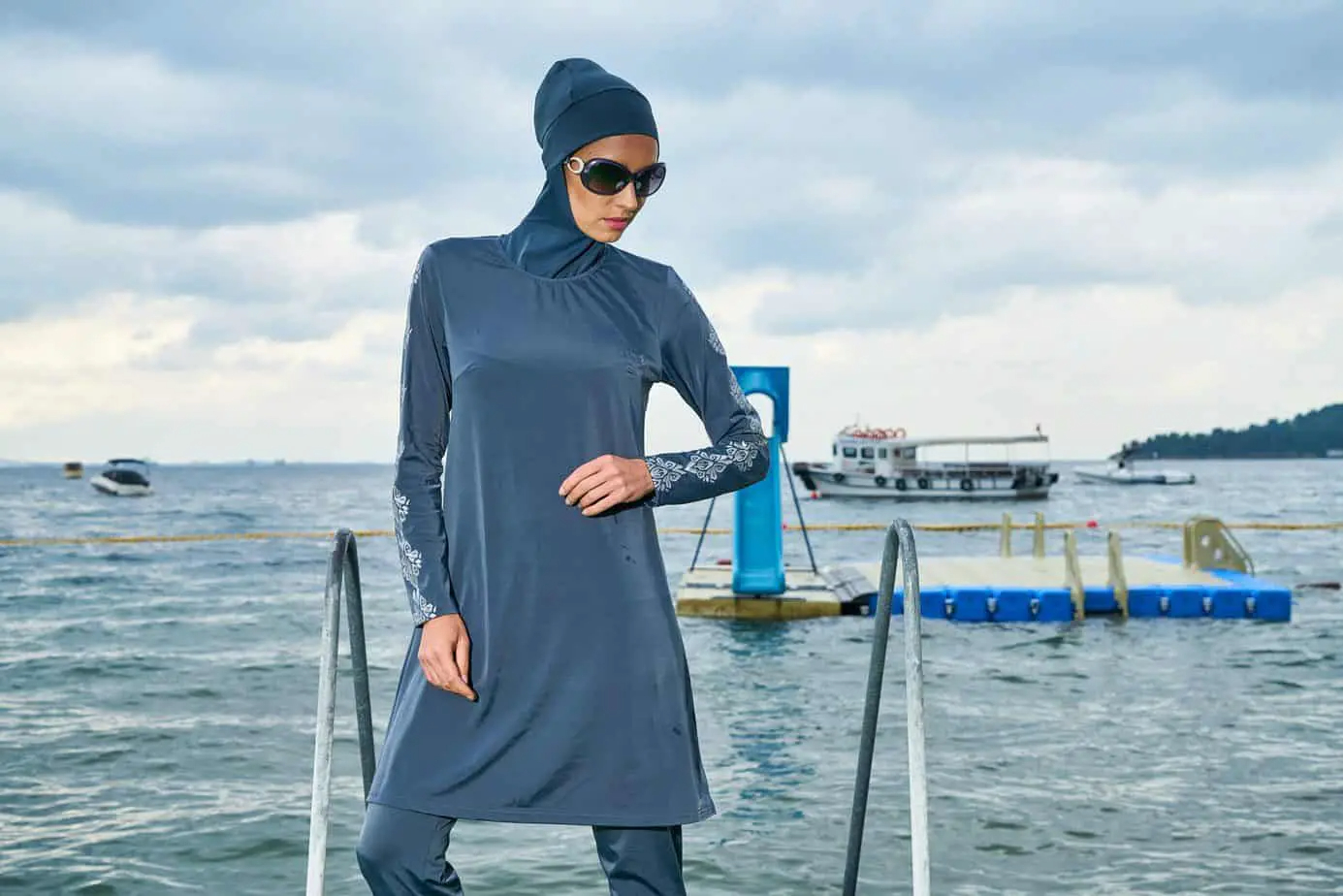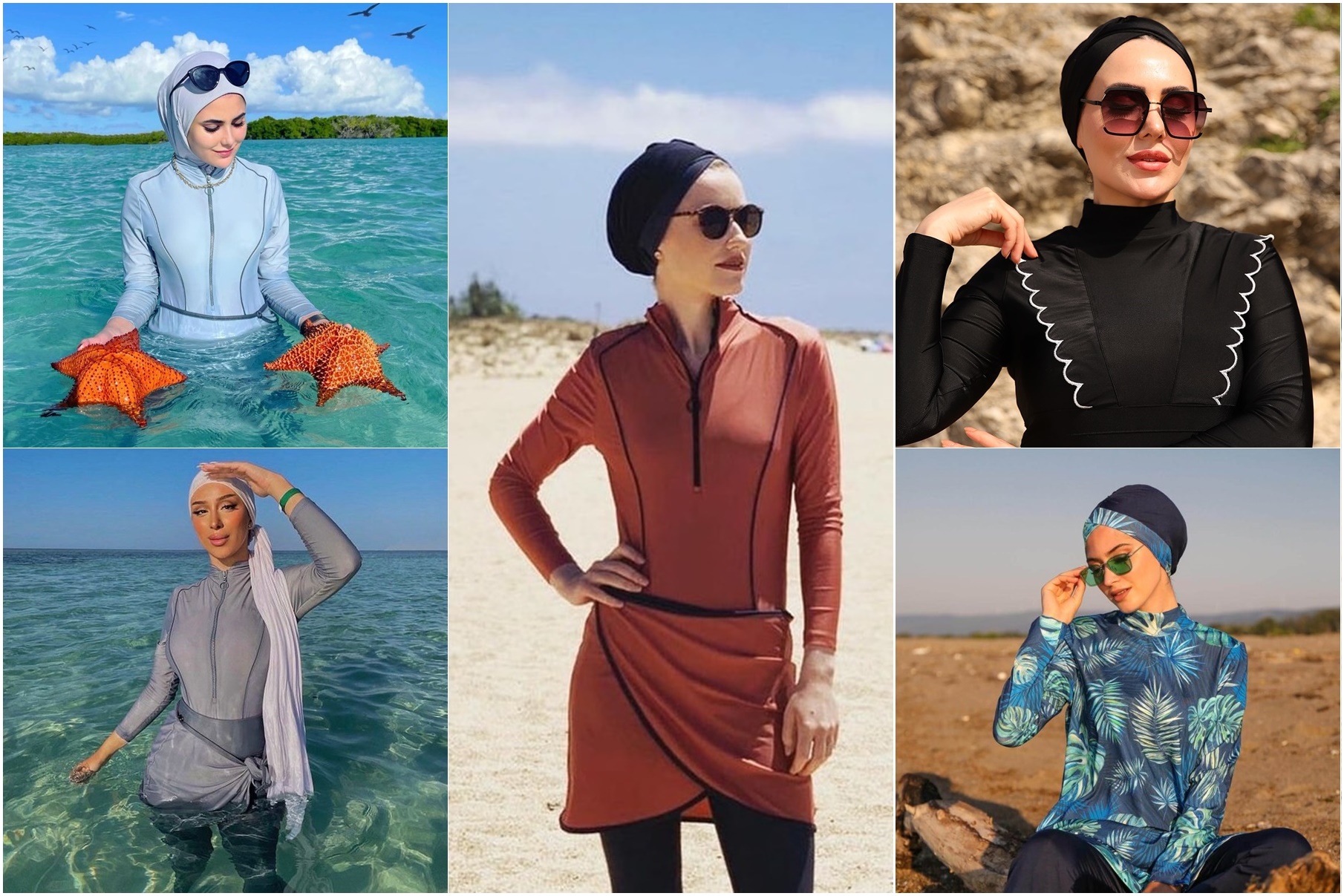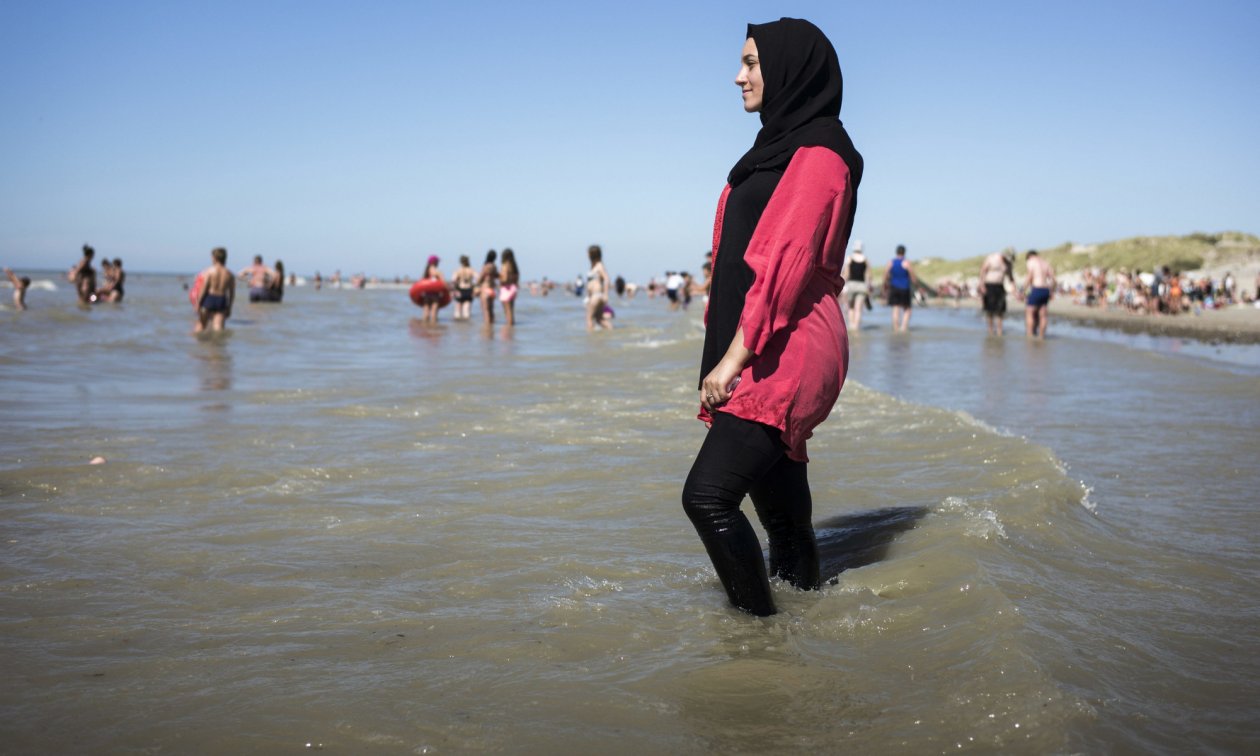Home>Women's Underwear>Swimwear>What Is A Burkini


Swimwear
What Is A Burkini
Modified: September 23, 2023
Discover the beauty and versatility of the burkini - the perfect swimwear option for modesty and comfort. Explore our collection of stylish burkinis today!
(Many of the links in this article redirect to a specific reviewed product. Your purchase of these products through affiliate links helps to generate commission for Under-tec.com, at no extra cost. Learn more)
Table of Contents
Introduction
Welcome to the world of swimwear, where fashion meets functionality and personal style takes center stage. One particular swimwear trend that has gained significant attention in recent years is the burkini. The burkini is a unique blend of modesty and style, allowing women of various cultural backgrounds to enjoy beach and pool activities comfortably.
The concept of the burkini originated as a response to the need for swimwear that adheres to Islamic principles of modesty. It provides an alternative option for women who choose to cover their bodies but still want to engage in water-based activities. This innovative swimwear design is not only a fashion statement but also a symbol of empowerment and inclusion.
The burkini has become increasingly popular, not only within the Muslim community but also among women of diverse backgrounds who appreciate its versatility and practicality. It allows women to freely partake in water sports, sunbathe, and enjoy outdoor activities with confidence and comfort.
However, the rise of the burkini has not been without controversy. It has sparked debates regarding religious freedom, cultural assimilation, and women’s rights. In some regions, the burkini has been banned, leading to heated discussions about individual liberties and the role of government in regulating personal choices.
While the burkini may seem like a simple swimwear choice, it represents a much broader conversation about tolerance, acceptance, and religious diversity in today’s society. This article will delve into the origins of the burkini, its cultural significance, controversies surrounding it, and the legal and social implications of burkini bans. We will also explore how the burkini has become a symbol of empowerment and freedom for many women around the world.
Definition of a Burkini
A burkini is a type of swimwear designed to provide modesty for women who wish to adhere to Islamic principles while enjoying water-based activities. It is a combination of the words “burqa” (a loose-fitting garment worn by some Muslim women for modesty) and “bikini” (a two-piece swimsuit). The burkini typically consists of a long-sleeved top, full-length pants, and a head covering, allowing women to maintain their modesty while participating in swimming, beach outings, and other water-related activities.
Unlike traditional swimwear, the burkini covers the body from the neck to the ankles, ensuring that women can maintain their desired level of modesty. The fabric used for burkinis is lightweight and quick-drying, making it suitable for swimming and water-based sports. The head covering can be in the form of a hood or a separate scarf, providing additional coverage if desired by the wearer.
It is important to note that the choice to wear a burkini is a personal decision made by individual women. Some women may choose to wear it for religious reasons, while others may opt for it to maintain modesty or protect their skin from sun exposure. The burkini allows women to enjoy water activities without compromising their beliefs or comfort.
Moreover, the design and availability of burkinis have evolved over the years. Now, there are various styles and patterns to choose from, catering to different preferences and fashion sensibilities. Women can find burkinis that not only meet their modesty requirements but also allow them to express their personal style and feel confident while enjoying outdoor activities.
Origins and Cultural Significance
The origins of the burkini can be traced back to Australia in the early 2000s when Aheda Zanetti, a Lebanese-Australian woman, created the first burkini under her swimwear label, Ahiida. Zanetti recognized the need for swimwear options that aligned with Islamic values and allowed Muslim women to feel comfortable and confident in the water. Her creation quickly gained popularity and has since become a symbol of empowerment for Muslim women worldwide.
The cultural significance of the burkini extends far beyond its practicality. For many Muslim women, the burkini represents a sense of religious identity and freedom. It allows them to participate in activities that were previously considered off-limits due to societal norms and the lack of suitable swimwear options.
The burkini also challenges stereotypes and misconceptions surrounding Muslim women’s clothing choices. It demonstrates that modesty and fashion can coexist, showcasing that covering one’s body does not equate to oppression or exclusion. Muslim women who wear the burkini are able to express their faith and maintain their values while fully engaging in the world around them.
Beyond the Muslim community, the burkini has gained acceptance and appreciation from individuals who value inclusivity and diversity. It sends a message of tolerance and respect for different cultural practices and reinforces the notion that everyone should have equal access to recreational activities, regardless of their clothing choices or religious beliefs.
The rise of the burkini has also brought about positive changes in the fashion industry. Brands are becoming more inclusive by offering a wider range of swimwear options, including burkinis, to accommodate the diverse needs and preferences of their customers. This shift not only allows Muslim women to feel represented but also promotes a more inclusive and accepting society overall.
In summary, the burkini’s origins can be attributed to the need for modest swimwear options for Muslim women. Its cultural significance goes beyond fashion, symbolizing religious identity, freedom, and inclusivity. The increasing acceptance and availability of burkinis highlight positive changes in societal attitudes and a greater understanding of diverse cultural practices.
Controversies Surrounding the Burkini
The burkini has been a topic of controversy since its inception. Its presence on beaches and in public spaces has sparked debates about religion, women’s rights, and cultural assimilation. While some view the burkini as a symbol of religious freedom and personal choice, others argue that it represents a challenge to societal norms and may hinder integration.
One of the main controversies surrounding the burkini is the argument that it perpetuates the oppression and seclusion of women. Critics claim that by covering the body, the burkini reinforces patriarchal beliefs and restricts women’s freedom to express themselves. They argue that traditional swimwear allows for greater comfort and freedom of movement, and that the burkini is unnecessary.
Additionally, the burkini has faced scrutiny in regions with strict secular traditions. Some communities and governments have banned the burkini in the name of preserving secularism and preventing religious symbols from infiltrating public spaces. These bans have sparked further debates about the limits of personal freedom and the role of the state in regulating individual choices.
On the other hand, proponents of the burkini argue that banning it is an infringement on individual rights and religious freedom. They believe that women should have the autonomy to dress as they choose, without interference from the state or society. They emphasize that the burkini allows women to participate fully in activities they would otherwise be excluded from, promoting inclusivity and equal access for all.
Furthermore, the controversy surrounding the burkini highlights the need for greater understanding and respect for diverse cultural practices. It calls for a shift in perception, recognizing that clothing choices can hold significance beyond fashion, and that different interpretations of modesty exist across cultures and religions.
Ultimately, the controversies surrounding the burkini reflect deeper societal tensions and raise important questions about individual liberties, cultural integration, and religious tolerance. It is crucial to approach these discussions with empathy, openness, and a commitment to understanding and respecting diverse perspectives.
Burkini Bans: Legal and Social Implications
The issue of burkini bans has generated significant legal and social implications in various regions around the world. These bans, implemented by local governments and beach authorities, prohibit the wearing of burkinis in public spaces such as beaches and swimming pools. While proponents argue that these bans promote secularism and prevent religious symbols from encroaching on public life, they have sparked widespread debates regarding personal freedoms, discrimination, and the role of the state in regulating individual choices.
The legality of burkini bans varies depending on the jurisdiction. In some countries, the bans have been deemed unconstitutional, infringing upon religious freedom and the right to personal expression. Courts in these regions have struck down such bans, recognizing that individuals have the right to dress according to their beliefs, as long as it does not pose a threat to public safety or security.
However, in other areas, these bans have been upheld by courts, often on the grounds of public order or the need to maintain secularism. Proponents argue that the burkini symbolizes religious extremism and goes against the values of the society in which it is worn. They claim that such bans protect social cohesion and prevent the marginalization of other individuals who may feel uncomfortable or offended by the visibility of religious symbols in public spaces.
Nevertheless, the implementation of burkini bans has ignited social tensions and debates about discrimination and Islamophobia. Critics argue that these bans target and stigmatize Muslim women, limiting their access to public spaces and perpetuating stereotypes. They assert that these bans do not promote integration but rather isolate and marginalize Muslim communities, undermining the principles of religious freedom and equal treatment.
Furthermore, the burkini bans have raised questions about the boundaries of state power. Critics argue that a government’s interference in personal clothing choices violates individual rights and sets a dangerous precedent for further intrusions into personal freedoms. They contend that the state’s role should be to protect and promote diversity and inclusivity rather than enforce conformity.
In response to these bans, many individuals and organizations have advocated for the acceptance and inclusion of burkinis as a way to promote diversity and religious freedom. They emphasize the importance of dialogue, understanding, and respect for different cultural practices, recognizing that personal clothing choices should not be a basis for discrimination or exclusion.
As the debate surrounding burkini bans continues, it is important to navigate the complex terrain of personal freedoms, cultural expression, and social cohesion. Striking a balance between individual rights and societal norms is a continuous challenge that requires open dialogue, empathy, and a commitment to upholding fundamental principles of equality and freedom.
Symbols of Empowerment and Freedom
Despite the controversies and bans surrounding the burkini, it has emerged as a powerful symbol of empowerment and freedom for many women around the world. The ability to enjoy water activities while maintaining personal values and religious beliefs has empowered women to take control of their own narratives and challenge societal norms.
For Muslim women specifically, the burkini represents a form of liberation. It allows them to actively engage in activities that were previously off-limits due to the lack of suitable swimwear options. By participating in swimming, surfing, or simply sunbathing on the beach, these women are reclaiming their right to fully experience the world around them while remaining true to their faith and modesty standards.
By wearing the burkini confidently, Muslim women are also challenging stereotypes and misconceptions surrounding their culture and religion. They are showing the world that being covered does not hinder their abilities, aspirations, or confidence. The burkini becomes a tangible representation of their resilience, determination, and pursuit of personal fulfillment.
Moreover, the acceptance of the burkini as a legitimate swimwear choice promotes inclusivity and diversity. It signals that everyone, regardless of their clothing choices or religious beliefs, should have equal access to recreational activities without facing discrimination or exclusion.
The burkini has also inspired a wave of creativity and innovation in the swimwear industry. Designers and brands have recognized the demand for modest swimwear options and have responded by offering a wider range of styles and designs. This inclusivity not only ensures that women of different backgrounds have access to swimwear that aligns with their values but also pushes the boundaries of fashion and showcases the beauty of diversity.
Furthermore, the burkini serves as a reminder that personal freedom extends beyond societal expectations and norms. It encourages individuals to celebrate their unique identities and make choices that align with their values, regardless of whether they conform to mainstream standards. The burkini becomes a symbol of personal agency, encouraging individuals to embrace their authenticity and express themselves unapologetically.
Ultimately, the burkini is more than just a piece of swimwear; it signifies the ongoing struggle for gender equality, religious freedom, and acceptance. It represents the power of choice, allowing women to define and shape their own narratives. By embracing the burkini as a symbol of empowerment and freedom, we move closer to creating a society that celebrates diversity, fosters inclusivity, and respects individuality.
Conclusion
The burkini, a unique and innovative swimwear design, has sparked debates and controversy around the world. While some argue that it restricts women’s freedom and goes against societal norms, others see it as a symbol of empowerment and inclusivity. Throughout this article, we have explored the origins, cultural significance, controversies, and legal implications surrounding the burkini.
The burkini was created as a response to the need for swimwear that adheres to Islamic principles of modesty. It allows women to comfortably participate in water-based activities while maintaining their desired level of coverage. The popularity of the burkini has grown beyond the Muslim community, highlighting its versatility and practicality for women of diverse backgrounds.
However, the burkini has faced controversy and bans in some areas. These bans raise questions about individual liberties, religious freedom, and the role of the state in regulating personal choices. They also spark discussions about discrimination, cultural assimilation, and the importance of understanding and respecting diverse practices and beliefs.
Despite the controversies, the burkini serves as a symbol of empowerment and freedom. For many women, it represents a form of liberation, enabling them to actively engage in activities they were previously excluded from. It challenges stereotypes and misconceptions, showcasing that modesty and fashion can coexist, and that personal clothing choices do not define one’s abilities or aspirations.
Furthermore, the acceptance of the burkini as a legitimate swimwear choice promotes inclusivity and diversity. It emphasizes the importance of equal access to recreational activities and challenges societal norms that dictate what is considered acceptable. The burkini has also inspired creativity and innovation in the swimwear industry, offering women of different backgrounds a wider range of options that align with their values and preferences.
In conclusion, the burkini represents a significant shift in the swimwear landscape, blurring the lines between fashion, functionality, and personal expression. It carries deeper meanings of religious identity, freedom, and empowerment. The ongoing discussions and debates surrounding the burkini highlight the need for empathy, understanding, and respect for diverse cultural practices in our increasingly globalized society.










